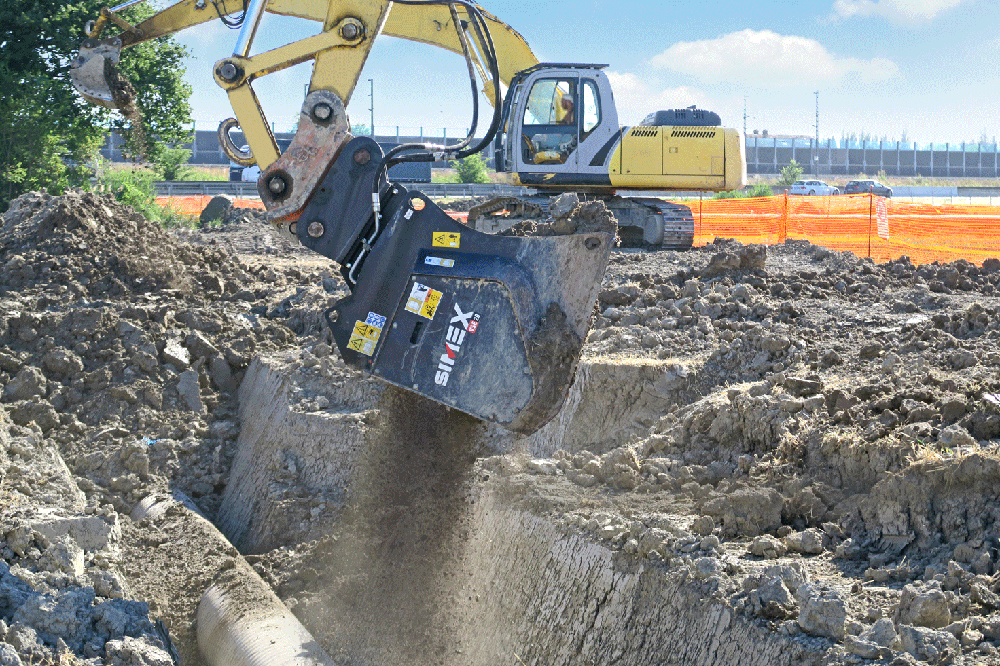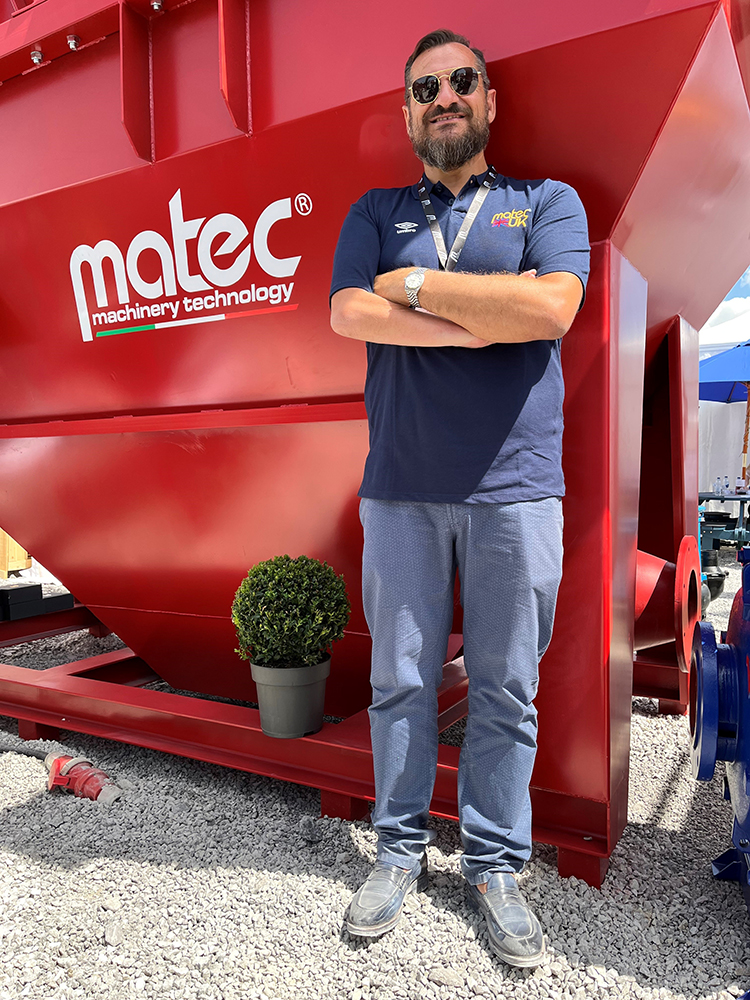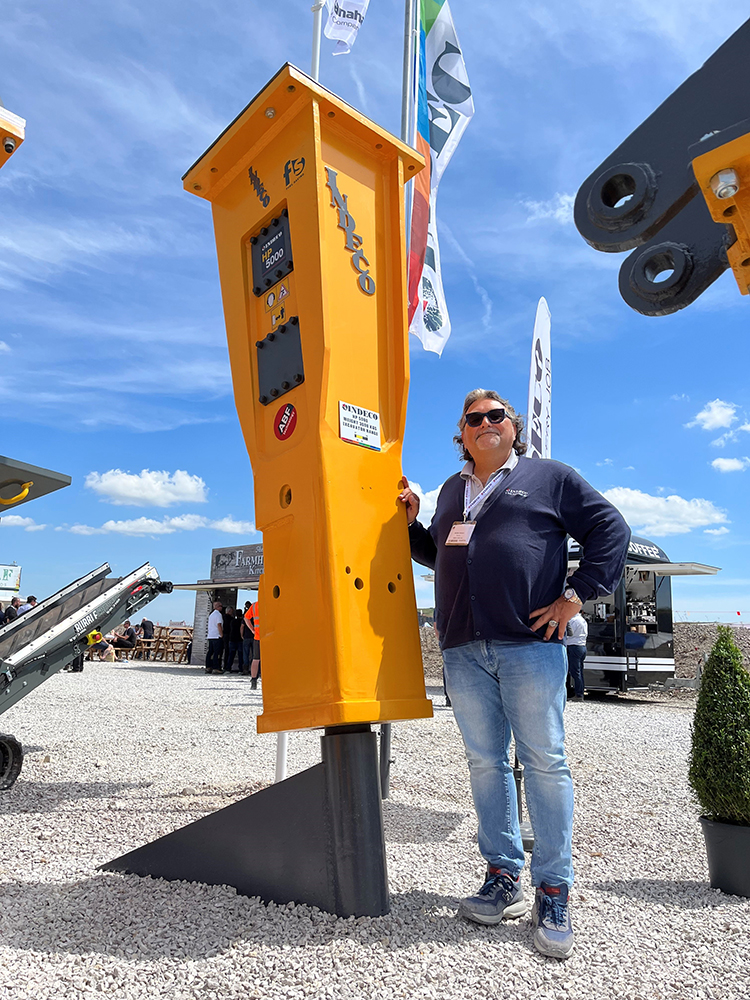
The numbers are in, and they are looking pretty good. Sales of construction machinery in Italy rose 30% in 2021 to 25,554 units – with further growth of around 11% to 28,465 units forecast in 2022.
The statistics from the Italian Construction Machinery Union (Unacea) and CER (European Research Centre) were released at the recent SaMoTer Day at Veronafiere in Verona, Italy. The next edition of SaMoTer, the triennial construction machinery exhibition, is scheduled 3-7 May 2023 alongside the Asphaltica exhibition.
Speaking during SaMoTer Day, Federico Bricolo, president of Veronafiere, said: "We are planning for 2023 an edition of the show that will take into account significant expansion, which, in coming years, will see the Italian construction sector receive a sizeable portion of the [NGEU] Recovery and Resilience [RRF] funds. This is why we are also moving at government level to ensure that institutional decision-makers attend SaMoTer and thereby facilitate discussion about these issues with companies and associations."

The data in the Unacea report outlined by Stefano Fantacone, CER scientific director, indicates that there was a strong acceleration in Italian construction machinery sales in Q4 2021. Data for the first quarter of 2022 indicated only a slight slowdown in the wake of the price of energy and difficulties in procurement of parts. Nevertheless, Fantacone said the construction machinery market trend remains positive, particularly for excavators, wheeled loaders, and wheeled excavators.
Fantacone said 2022 could see an 11.3% rise in construction machinery sales; and an 11.8% increase in earthmoving machinery sales; a 15.1% rise in roadbuilding machinery sales, and a 17.4% uptick in concrete machinery unit sales. Quoting further Unacea report data, Fantacone said Italian construction machinery exports in Q1 2022 were worth €689.5 million - up 7.4% in value on the same period of last year. Meanwhile, construction machinery imports to Italy in the same quarter nearly doubled in value to €529.7 million, up 94.7%.
Summarising the Unacea report, Luca Nutarelli, the association’s secretary-general, said: "The construction machinery market in Italy continues to be dynamic, even if there is a slowdown for order books arising from uncertainties caused by geopolitical tensions. However, we hope to close the year with two-figure [sales] growth."
Italian hydraulic attachments specialist Simex echoes Unacea and GlobalData’s upbeat Italian market analysis. Alessandro Ferrin, the company’s marketing executive, said: “Global trends indicate a significant increase in Italian demand for machinery, following what happened in 2021, a year that was a turning point after the [height of the] pandemic. The aggregates market is also influenced by large investments in major public works, especially those regarding key infrastructures.”
Commenting on the key issues and challenges facing Italian aggregate producers/quarry operators, and how Simex is helping to tackle them, Ferrin said: “There are plenty; one of those is related to circular economy and the need to process new types of materials to generate value. This implies a constant effort in research and development of even more versatile and reliable attachments. Recently, we launched a new crushing bucket specifically designed to recover asphalt slabs to generate reclaimed asphalt pavement, following the updated regulations in terms of end-of-waste and conglomerate recovery. This, therefore, led us to study new equipment for the operators, also beyond the common volumetric reduction or separation of aggregates.”
Asked by Aggregates Business how big a factor sustainability and reducing carbon emissions is to Simex’s Italian quarrying machinery customers, Ferrin said it was “probably the main factor” and “one of the big challenges” for the next decade.

“Electrification, waste reclassification, sustainability of the entire production cycle as well as of the entire quarry - aggregates - construction site chain: all this represents huge change stimulated from above [national/regional government, new legislation], but also need to be processed and adopted from below [quarry operators/aggregates product producers].”
Caterpillar has a big presence in the Italian quarrying and construction equipment market via its CGT dealership. Stefano Giardina, CGT product manager - large equipment, explains that aggregates production in Italy is traditionally very fragmented and is mostly made up of family-run companies. “Consequently, companies are looking for tailored solutions for equipment and related services. The collaboration between CGT and Caterpillar plays a central role by combining the ability to develop and deliver innovative services together with efficient Cat equipment. For example, the XE range of wheeled loaders helps our customers increase efficiency, lower fuel burn, and reduce CO2 per tonne.”
Like many other countries, Giardina says Italy is suffering from a shortage of qualified operators, and on-board technology in Cat equipment helps operators get better accuracy and hit target payloads. The Cat Operator Coaching feature teaches proper operator technique and Cat Autodig with Auto Set tyres ensures consistent high bucket-fill factor whilst Cat Payload with Assist provides an accurate weighing of bucket loads.
Commenting on current Italian building materials demand, Giardina says: “The demand for Italian marble remains strong, driven mainly by home construction, especially in markets such as the Middle East and China. The demand for aggregates is also strong and driven by substantial infrastructure projects.
“Under the [Italian] Infrastructure Operational Plan, the government is investing €5.3 billion to develop road, rail, and port infrastructure until 2025. Today, there are over hundred active infrastructure works in the country, both road and rail, such as the Brescia-Padua high-speed rail in north-central Italy and [the] Palermo-Messina [double-track railways project] in the South, with approved investments of over €100 billion. Such an amount of work requires a high quantity of materials, and that demand will remain high over the next few years.”
Asked about the importance of Italy’s recycled aggregates market, Giardina responds: “Italy is historically poor in raw materials and rich in art and landscapes, which makes natural aggregates extracted from quarries, mines, and riverbeds less and less available to the market and increases the use of recycled and artificial aggregates. Consequently, Italy has become one of the leading countries in Europe for the recovery of material from inert waste, through construction and demolition activities and other industrial processes. The recovery rate reaches 78% of the produced inert waste.

“The sector is waiting for two important laws to increase the circular rate in the construction industry: The end-of-waste decree for inert waste and the decree for C.A.M. [climate change adaption methodology] infrastructure [planning and implementation]. Its publication could give a strong boost to the market and help solve some issues since the only technical rule currently in force is 24 years old (February 28, 1998) and was written without considering features and differences on the nature of recycled and artificial aggregates and their possible use.
“In addition to the wait for the publication of these two decrees, there is also concern for the text of the inert end-of-waste decree notified to the European Commission by the [Italian] Ministry for Ecological Transition as it contains conceptual errors - for example the exclusion of EER [energy efficiency ratio] codes currently in use in many plants, such as earthquake waste - and imposes limits on the content of some constituent and non-contaminating elements, which risk blocking the entire sector.”
Giardina says the Italian authorities have issued around 1,880 permits for recycling inert waste, most of those are for small quantities. Only a few plants have an authorisation that exceeds 100,000 tonnes a year. “It is thought that there is still a lot to do to encourage an increase of the recycling rate in products and in civil, industrial and above all infrastructure building works,” he adds.
Looking at the Italian aggregates industry’s prospects for the next 18 months, Giardina says: “The demand for material and consequently for machines and equipment should remain at a high level with approved projects and a strong investment drive ensured by Italy’s Recovery and Resilience Plan (RRP) developed within the broader NGEU programme responding to the economic crisis triggered by the 2019 pandemic.
“Within the RRP there are two macro activities that will contribute significantly to the sustenance of the sector: the green revolution and ecological transition, the latter embraces the theme of improving the energy efficiency of public and private real estate assets and that of infrastructures for sustainable mobility. This complex plan benefits from an investment of over €190 billion which will drive the demand for the next few years. There are some variables that may impact negatively in the coming months, including the geopolitical situation in Eastern Europe and the pandemic that still today limits everyday life and work.”
Matec Industries (Matec), a major Italian washing plant solutions manufacturer for industries including quarrying and mining, has been doing strong business in recent years and has ambitious plans to increase its global sales reach.
Speaking about the Italian quarrying plant market to Aggregates Business during the recent Hillhead 2022 exhibition near Buxton, in Derbyshire, England, Matteo Goich, Matec’s founder and CEO, says: “Business in Italy is going much, much better. The Italian Covid Recovery Plan is generating plant demand, as are works associated with Industry 4.0., which come with tax credits for those who spend on machines linked to the development of new technology infrastructure. Matec is the only Italian manufacturer whose entire machine range is certified as Industry 4.0-approved for the Italian market. It means that our customers can access the tax credits by investing in us – cutting the cost for them by 50% in north and central Italy, and 90% in southern Italy.
“With the [coronavirus] recovery plan, there are a lot of construction projects, such as new highway infrastructure, which increases equipment demand. The Recovery Plan stresses that investment should be made in companies focused on promoting a circular green economy and Matec was born as a producer of wastewater treatment and water recycling plants.”
Speaking about the company’s manufacturing footprint, he says: “We have a 12,000m² wash plants factory in Massa-Carrara, and an around 10,000m² factory to produce our pumps and other equipment in Verona. We are opening another factory, a 20,000m² site close to Parma, and staging an open day on this in September. It is a big investment for us and includes a lot of automated production, such as robotic welding. It will manufacture our complete washing plants and our crushing and screening units.”

Goich continues: “Washing plants for C&D [construction and demolition] recycling applications is our biggest growth market within the aggregates industry. It is the future – and that is good for us as a leader in this area of the market. Another growth area for our complete washing plants will be processing contaminated soil.
“We want to increase the size range of our full washing plants, going from the little size to the big models, which include big log washers.
“I think next year we can achieve turnover of €65-75 million. We are very open to further acquisitions after Alfa Pumps. Our business plan in three years is arriving at €100 million turnover, and in five years, through acquisition and yearly sales growth, to a turnover of €200 million.”
Commenting on the Italian building materials market, Michele Vitulano, commercial & marketing director of Indeco, a Bari, Puglia-based hydraulic hammer manufacturer for industries including quarrying, said: “The market is changing. Italian politicians are pushing for the reuse of concrete and other crushing and demolition waste materials on-site in new building projects.”
To meet rising global hydraulic hammer demand, Vitulano, who was also speaking to Aggregates Business at Hillhead, said Indeco has invested in a new €7 million metal casing fabrication plant in the Bari area.
Speaking about general trading challenges faced by Indeco in Italy and the wider global market, he adds: “The cost of energy and [hammer manufacturing] materials is increasing, which leaves us facing difficulties in managing our production cost. We had not increased our [product] prices since 2007 until small single-digit rises last year. Many companies have made double-digit price increases, including in 2022. We did another single-digit price increase in February this year, but by the end of July, I think I will be forced to do another small increase as there appears no end to the production cost rise.”








